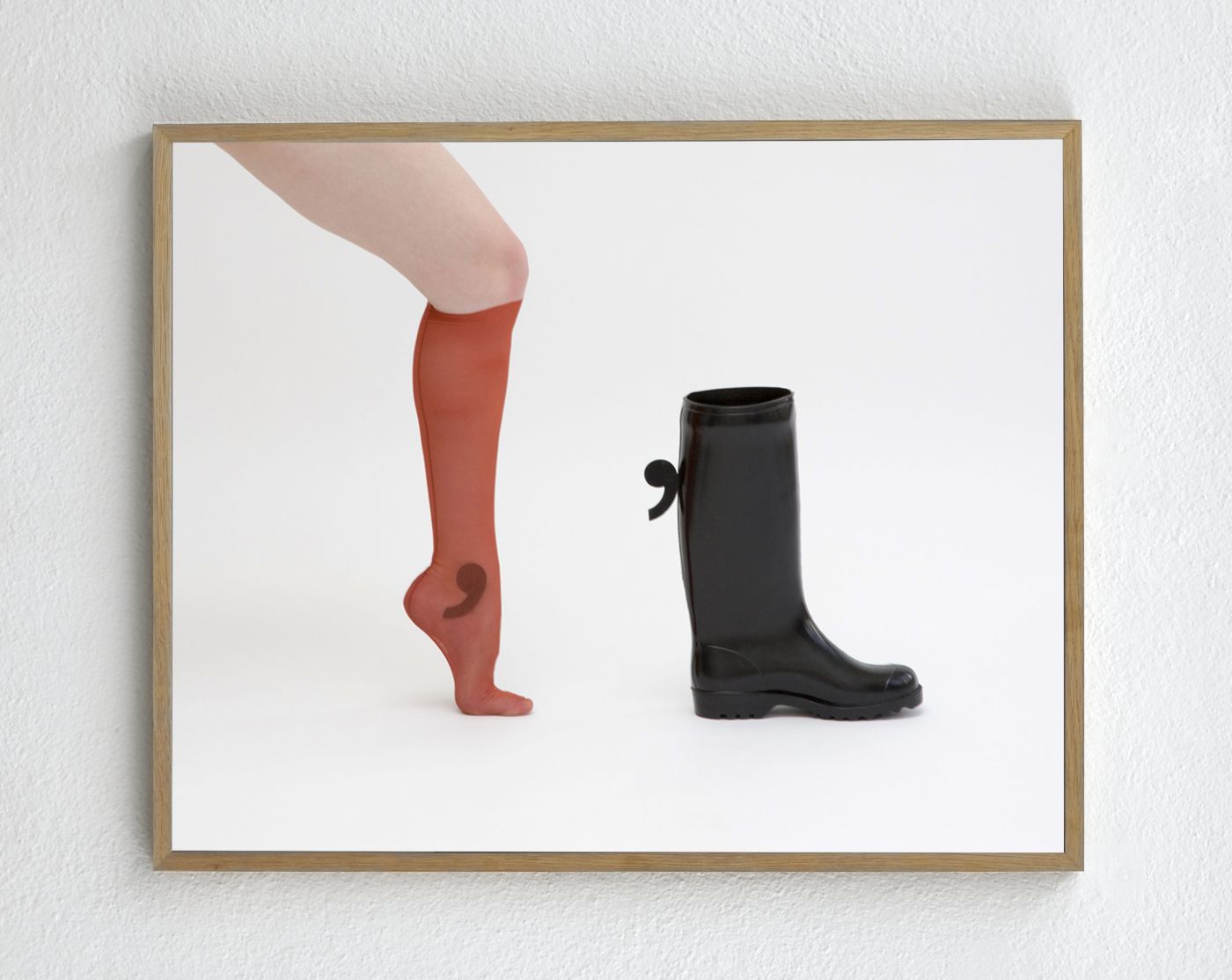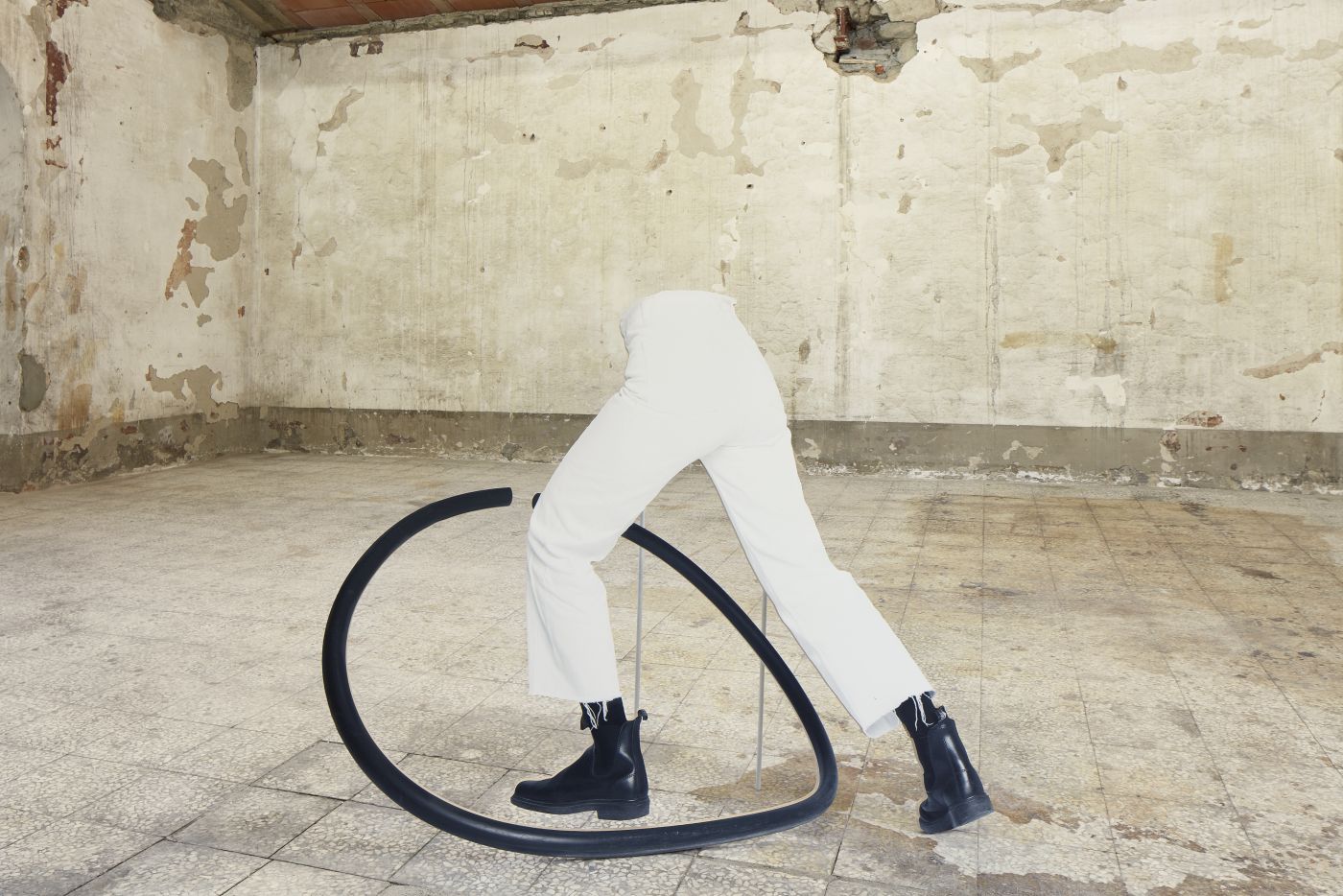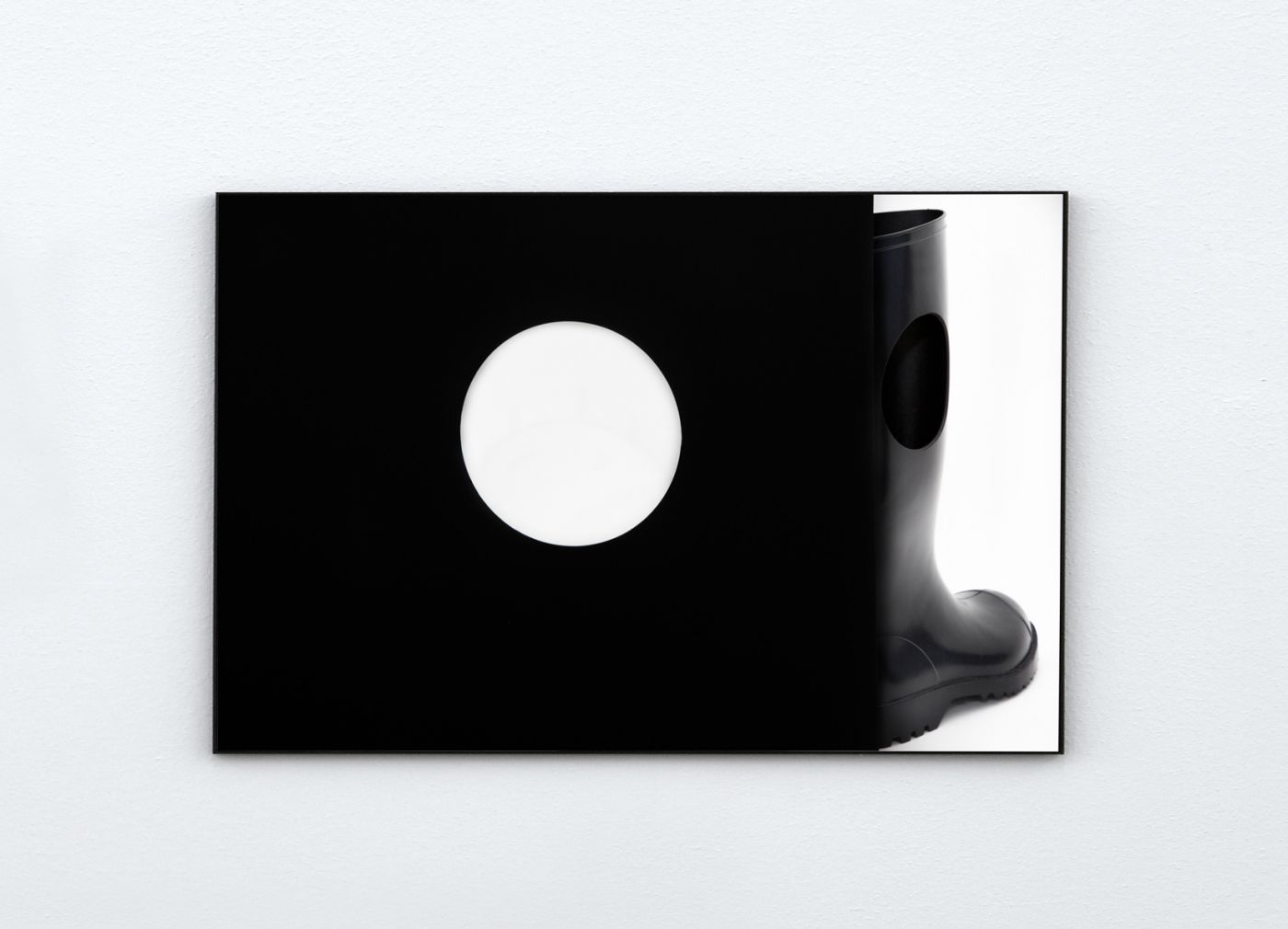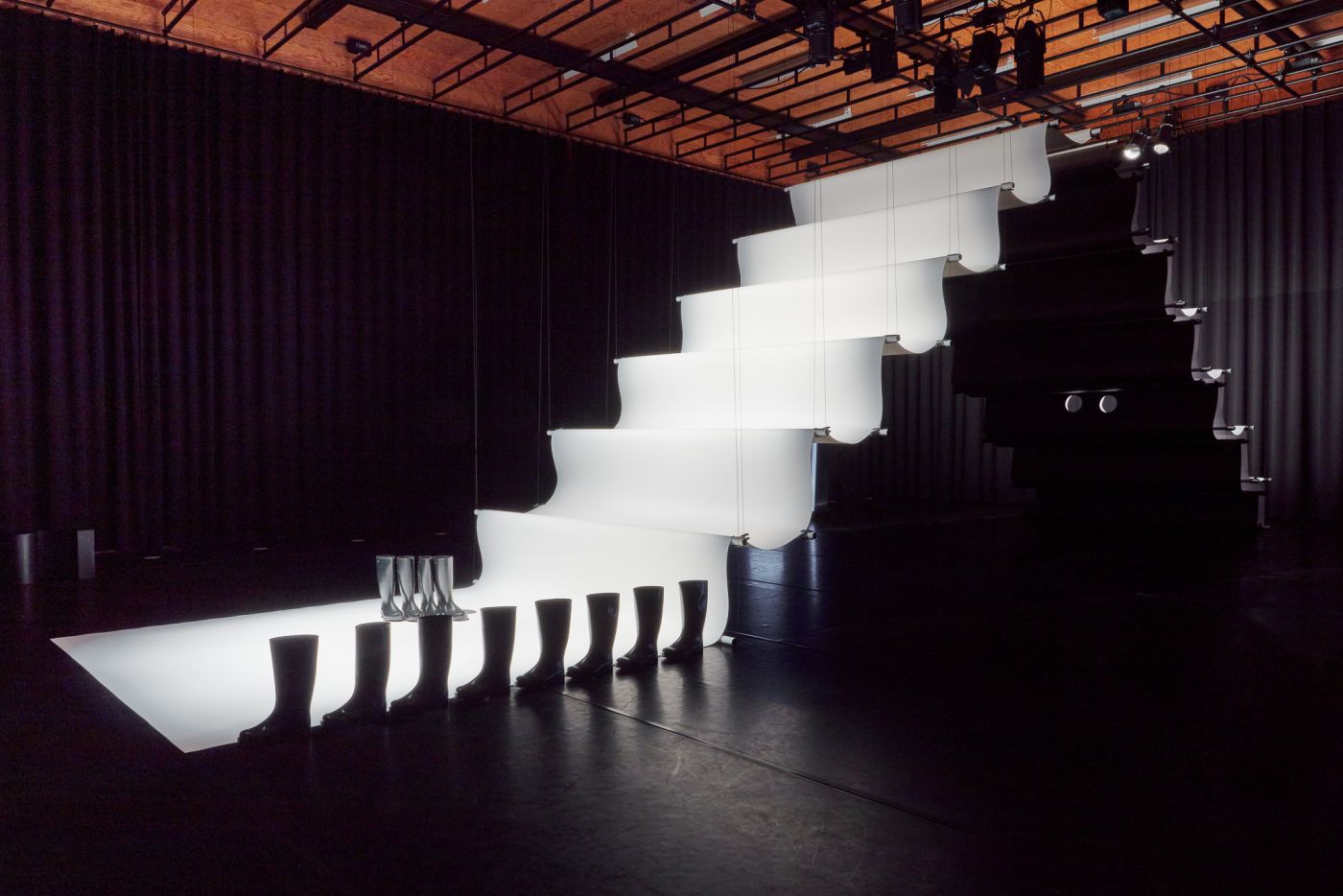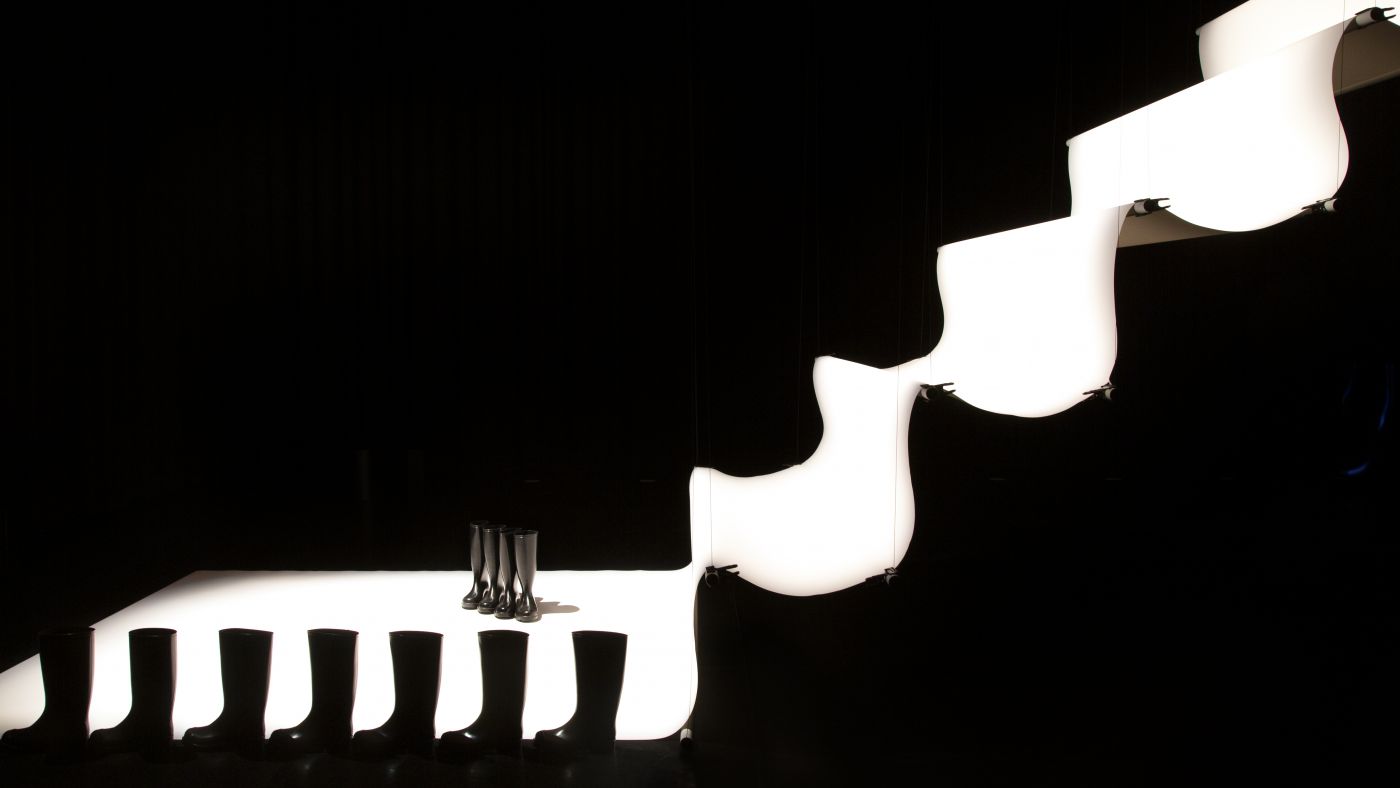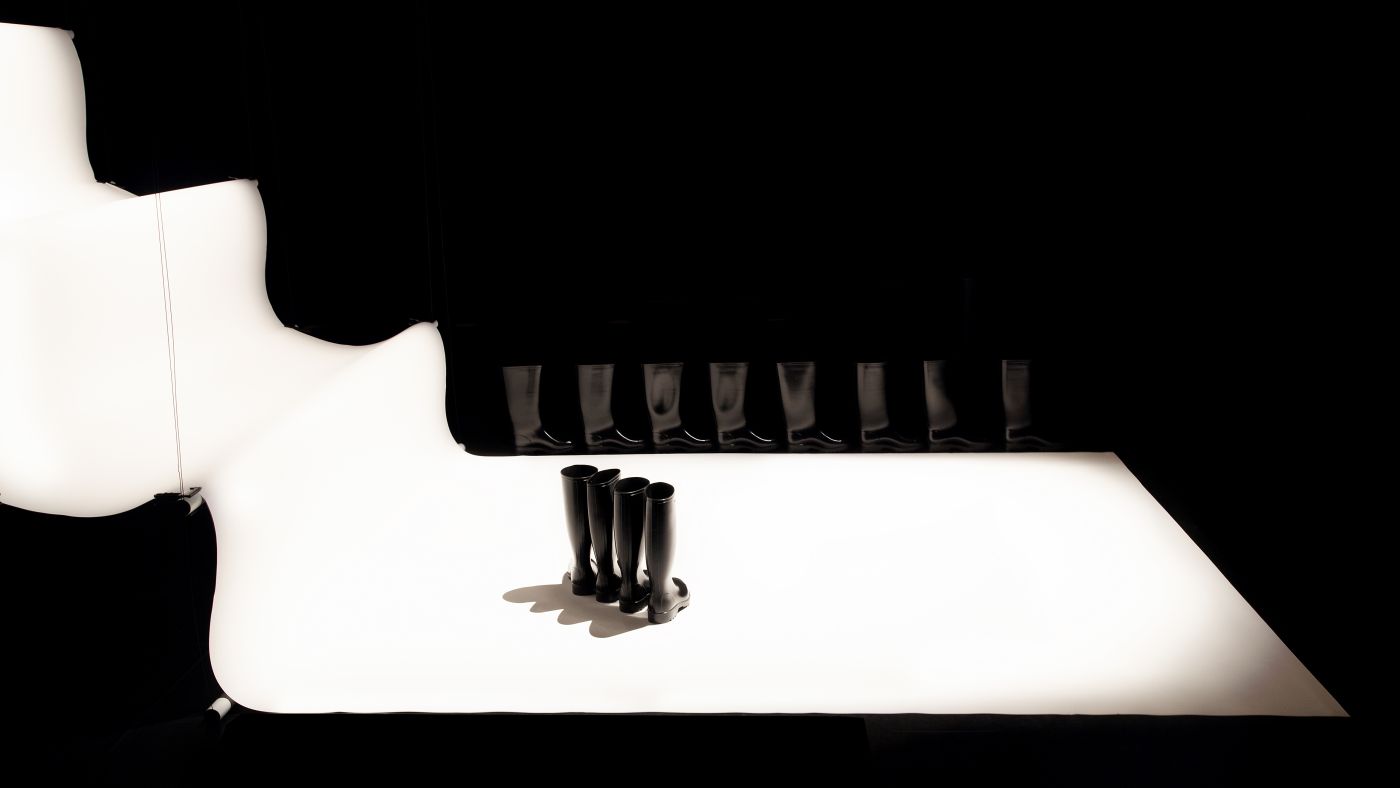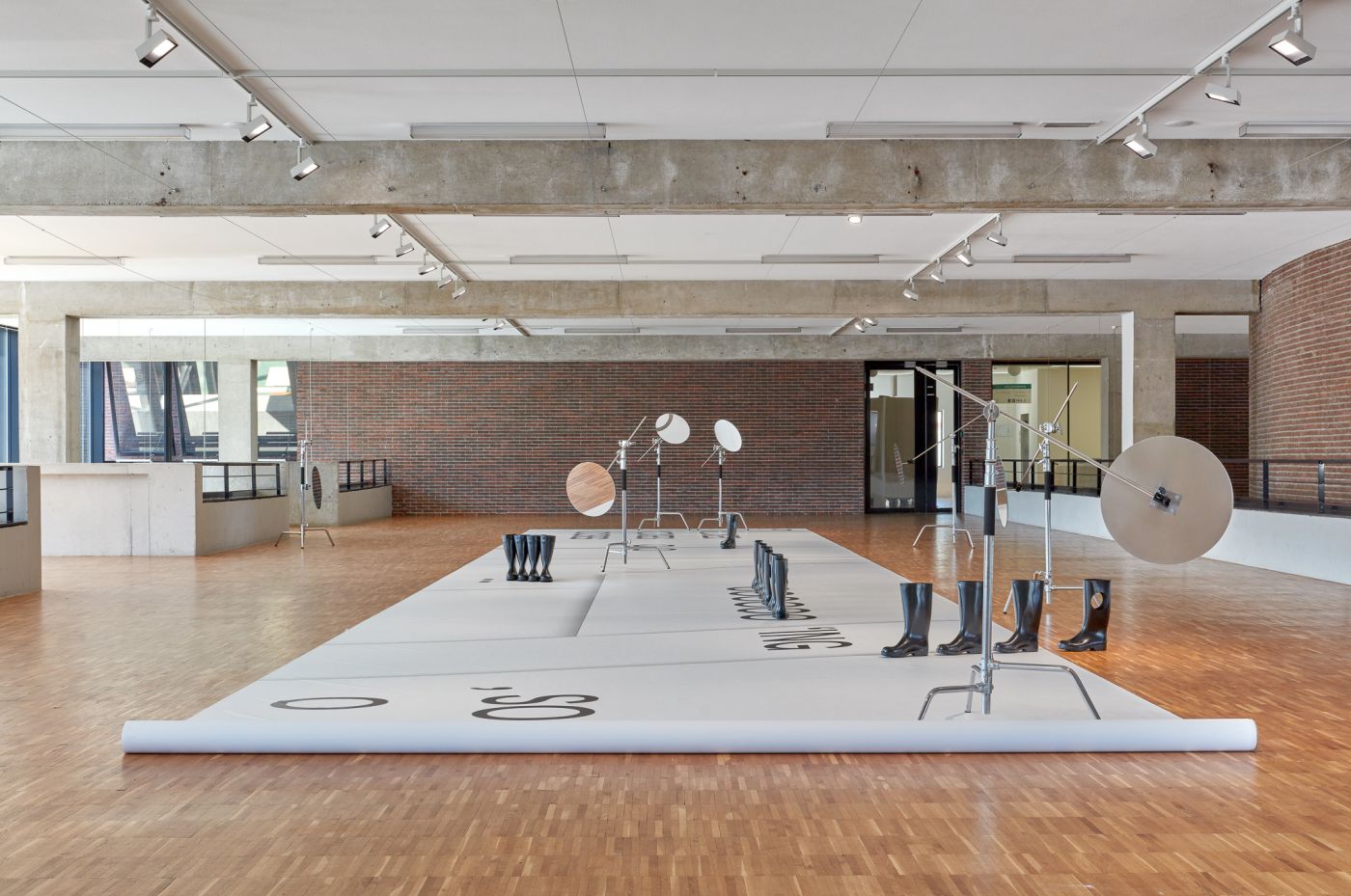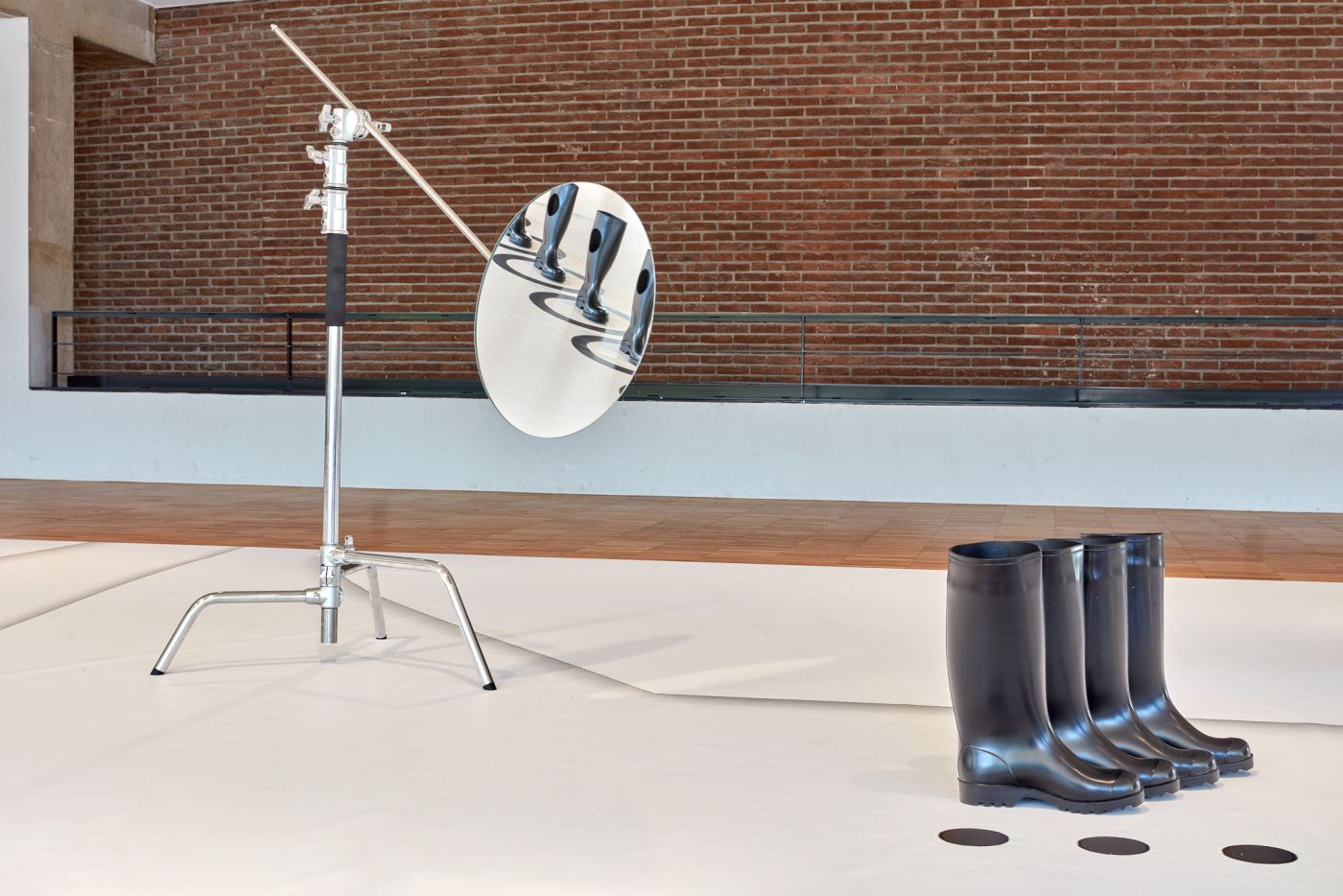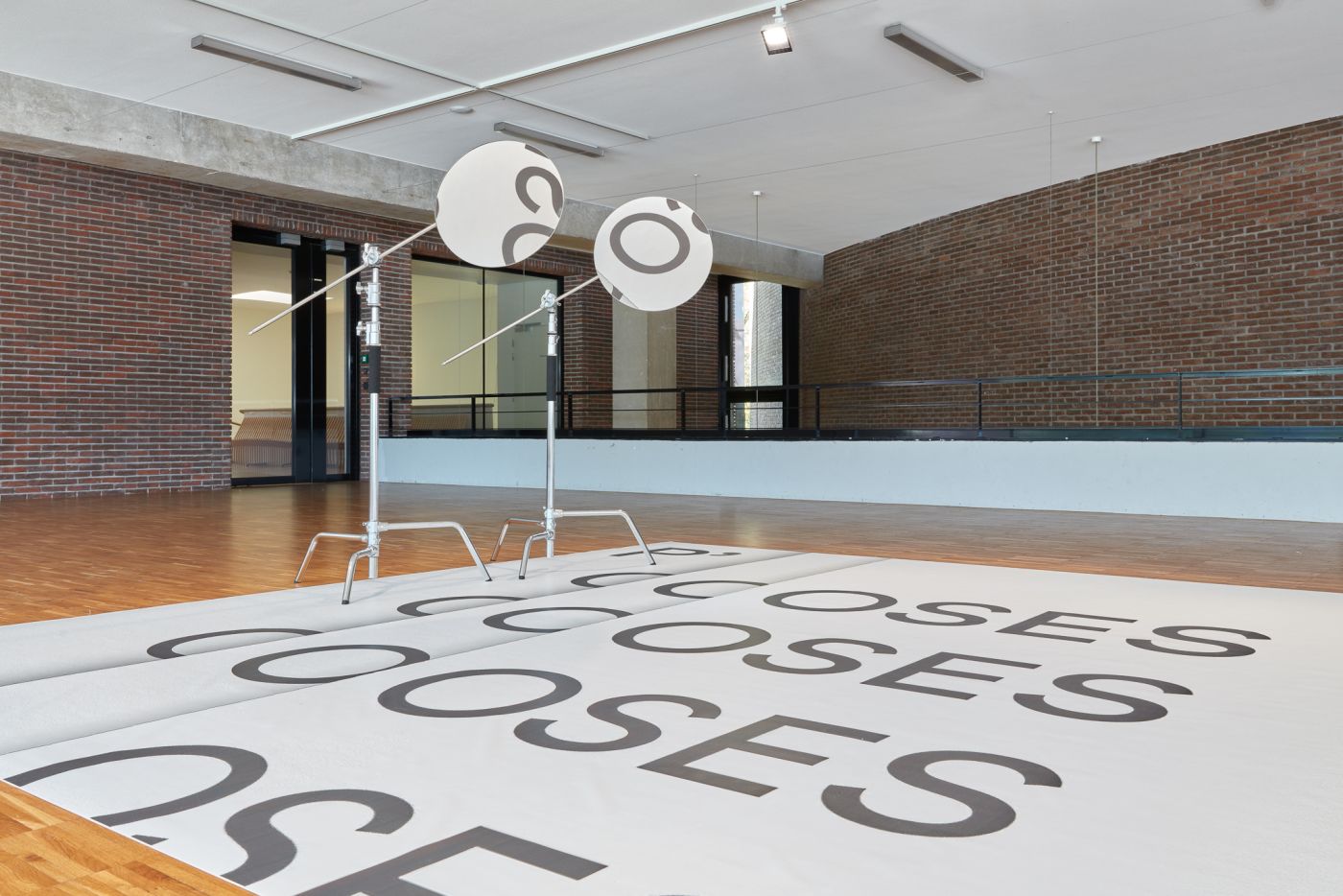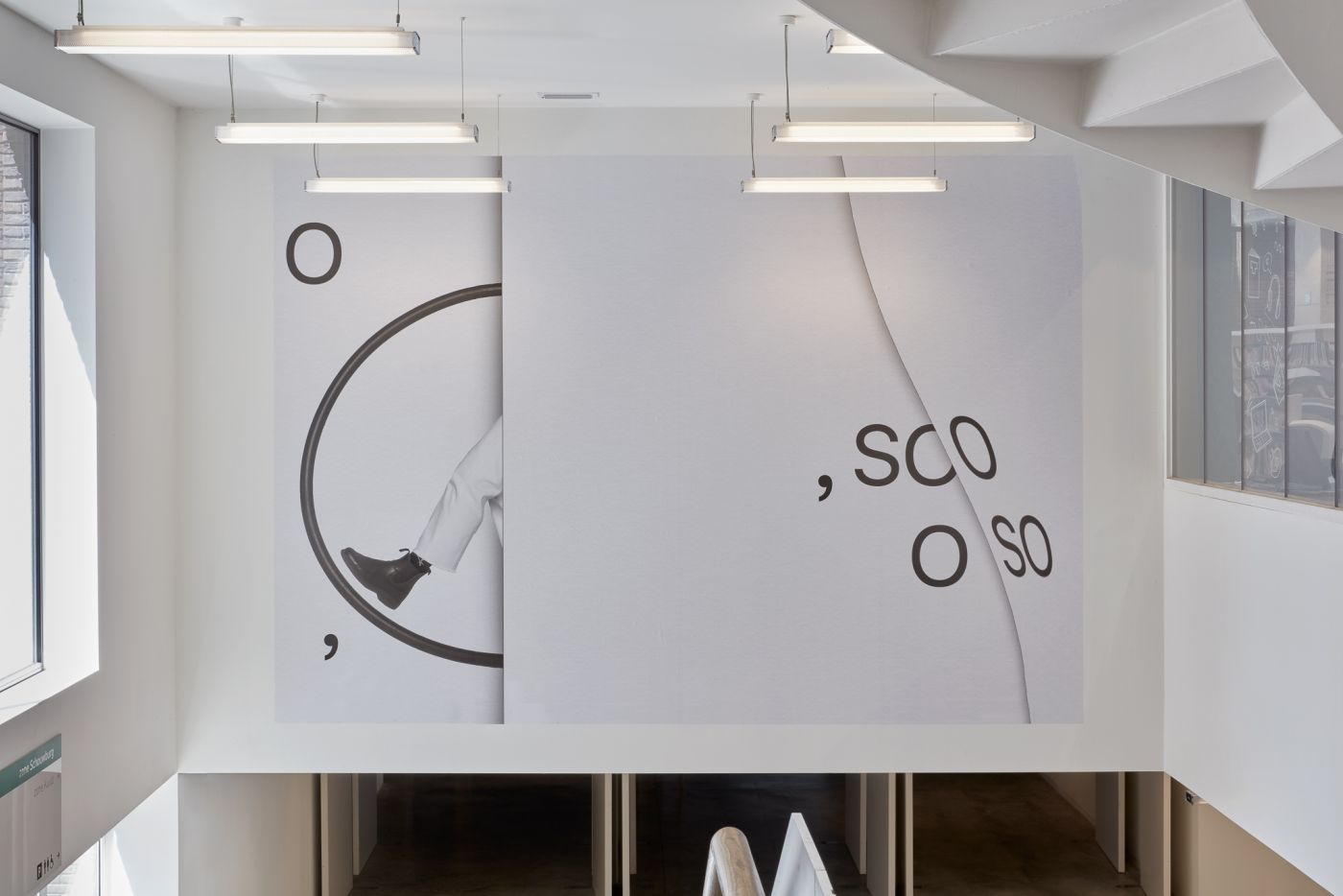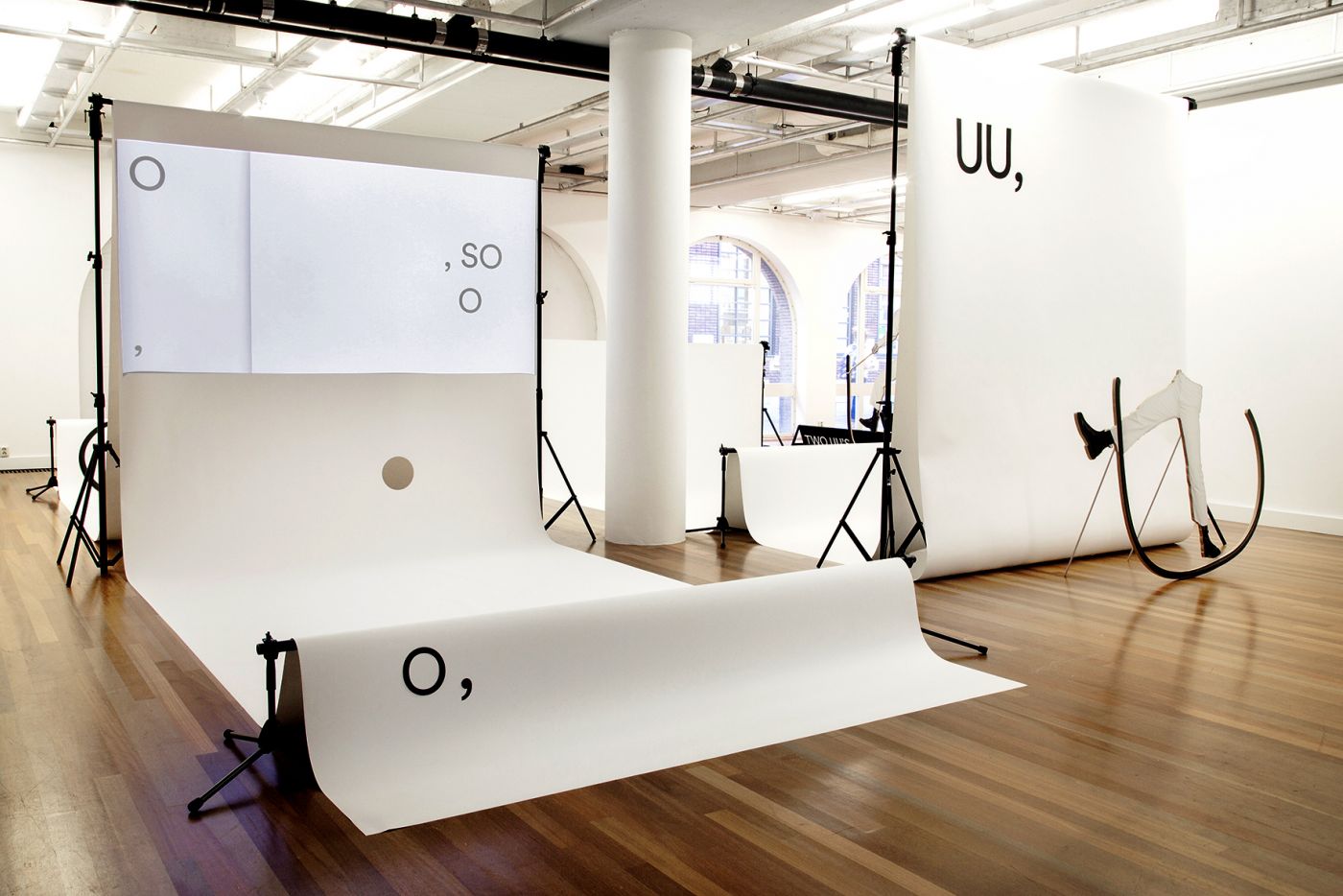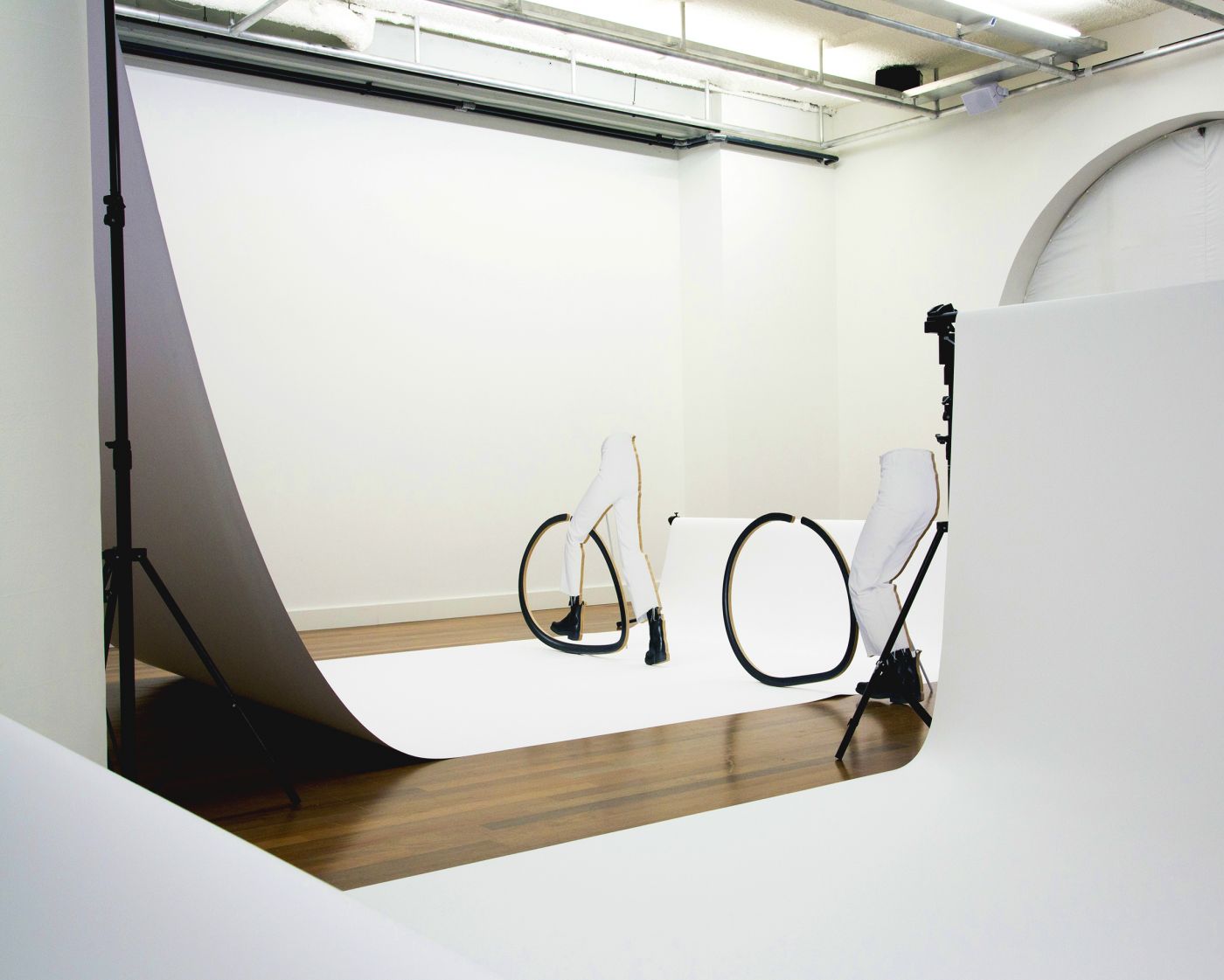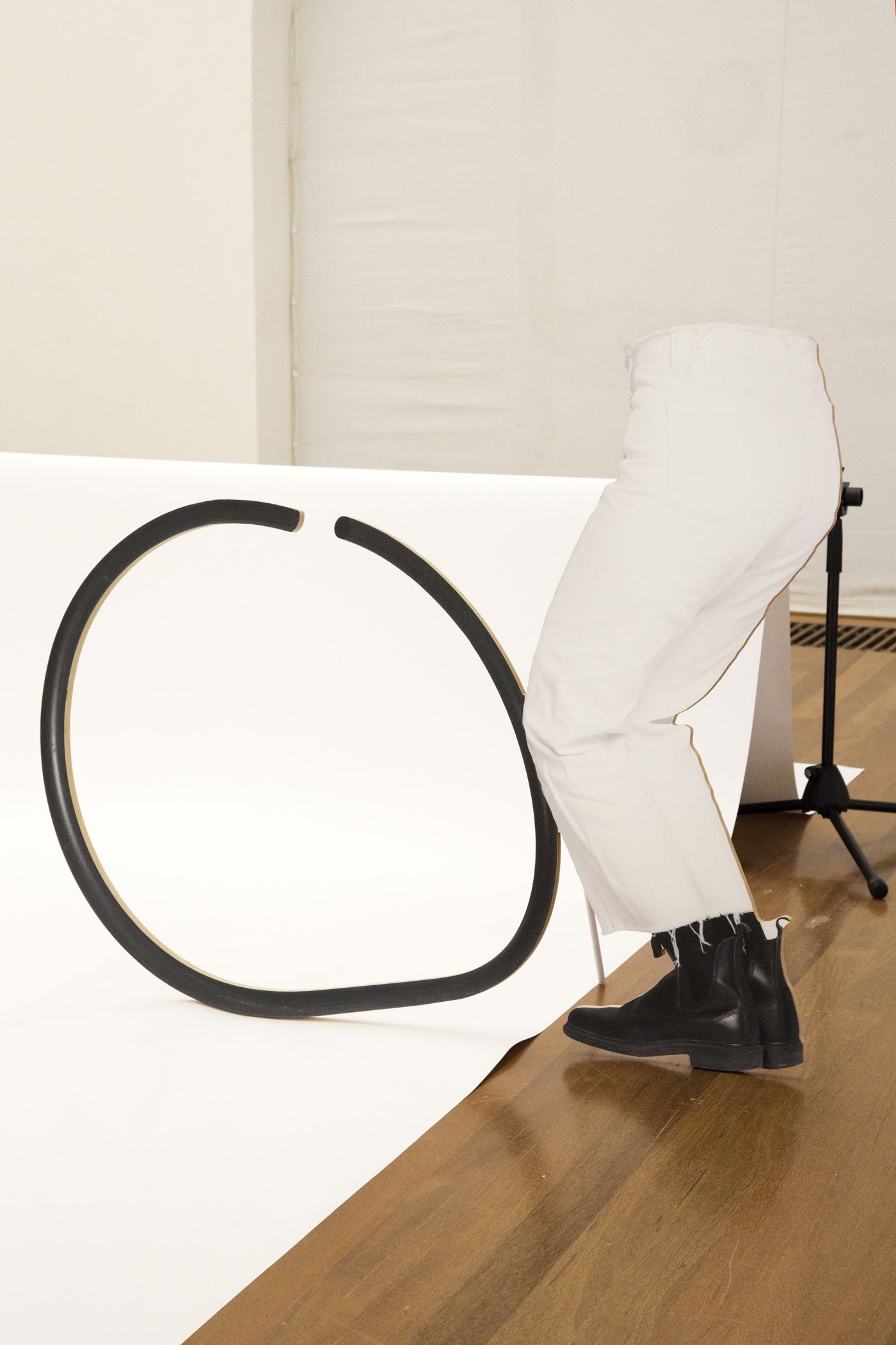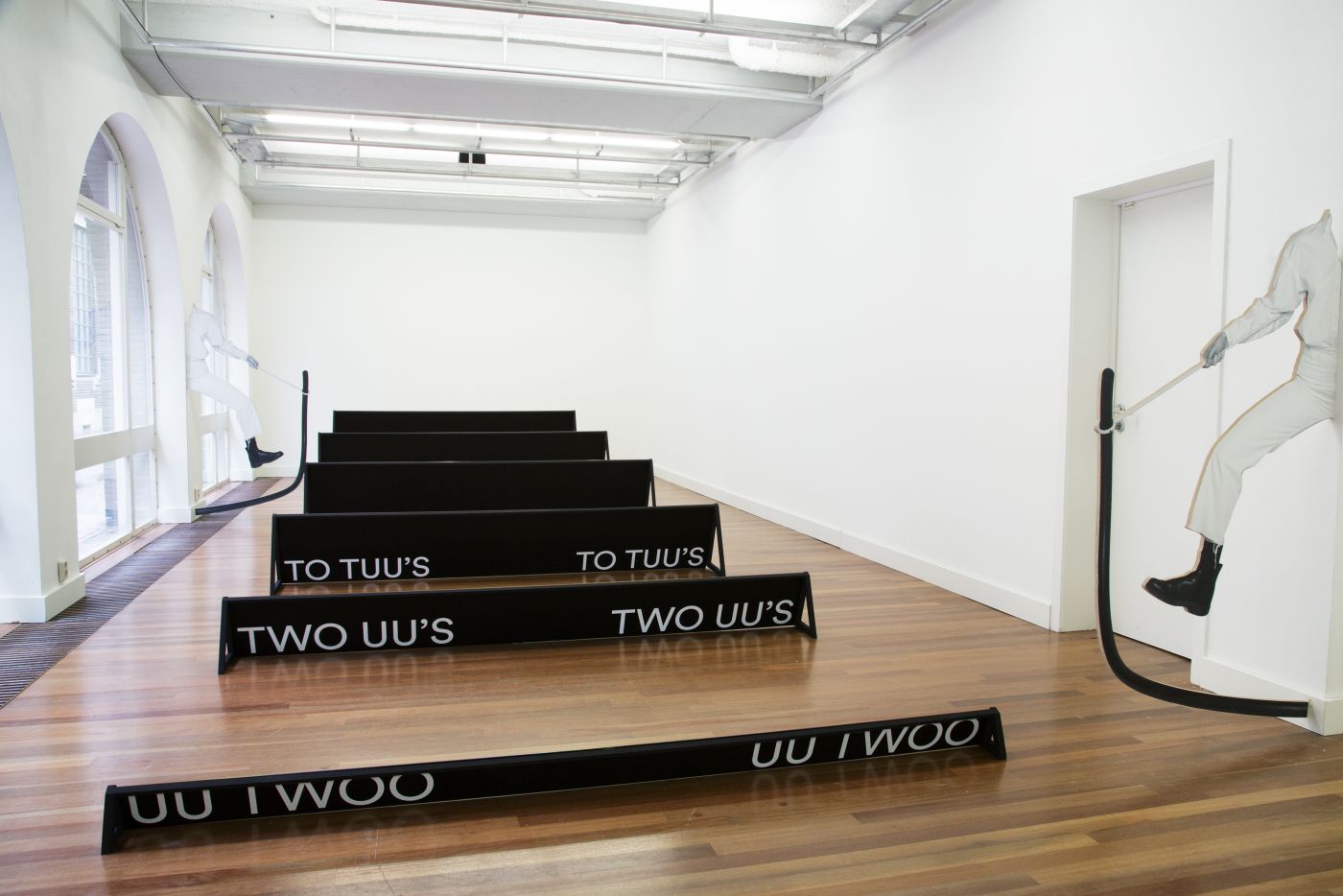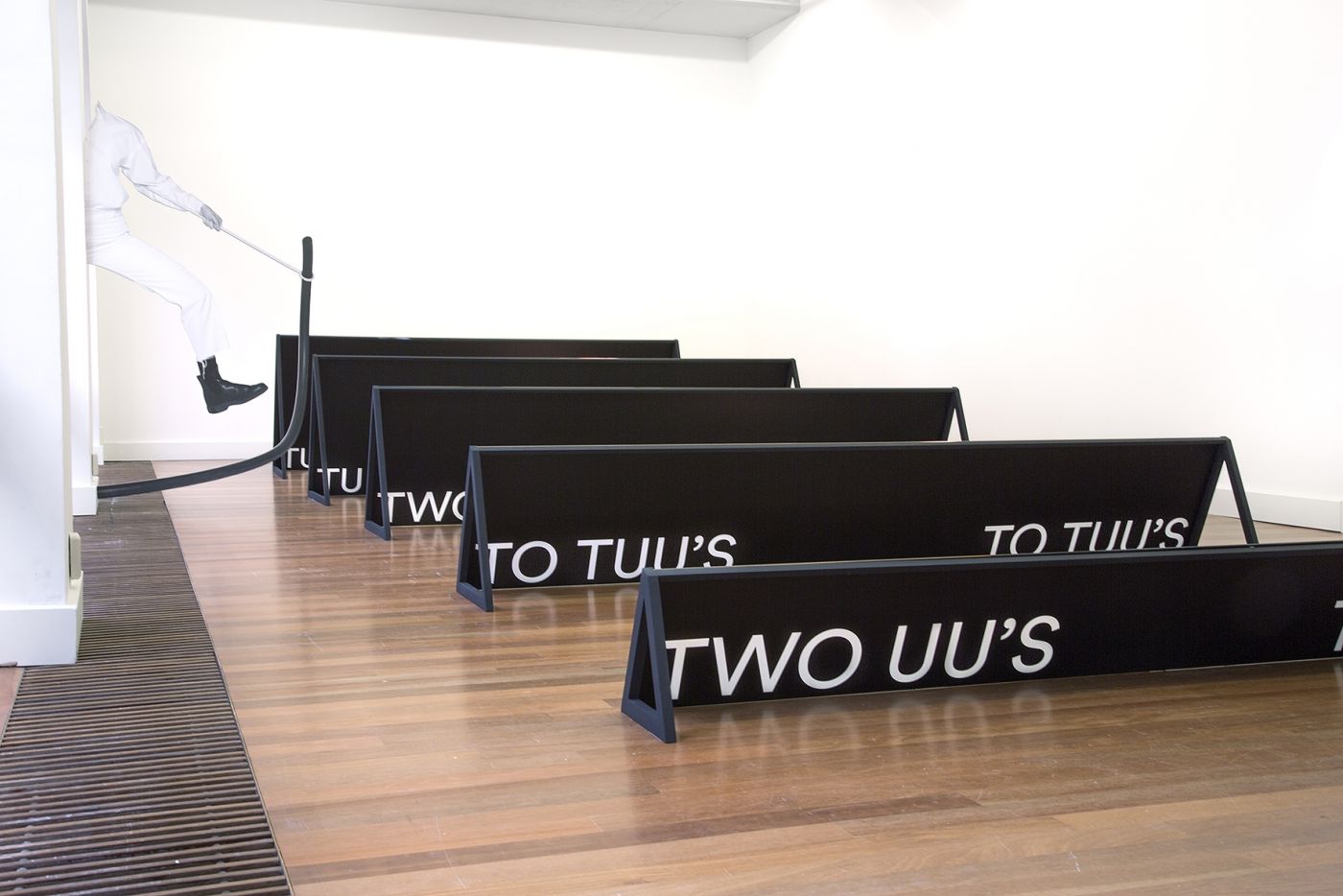Ode de Kort
Liste Year
Year of Birth
Country of Birth
Presented by
2021
1992
Italy
SpazioA
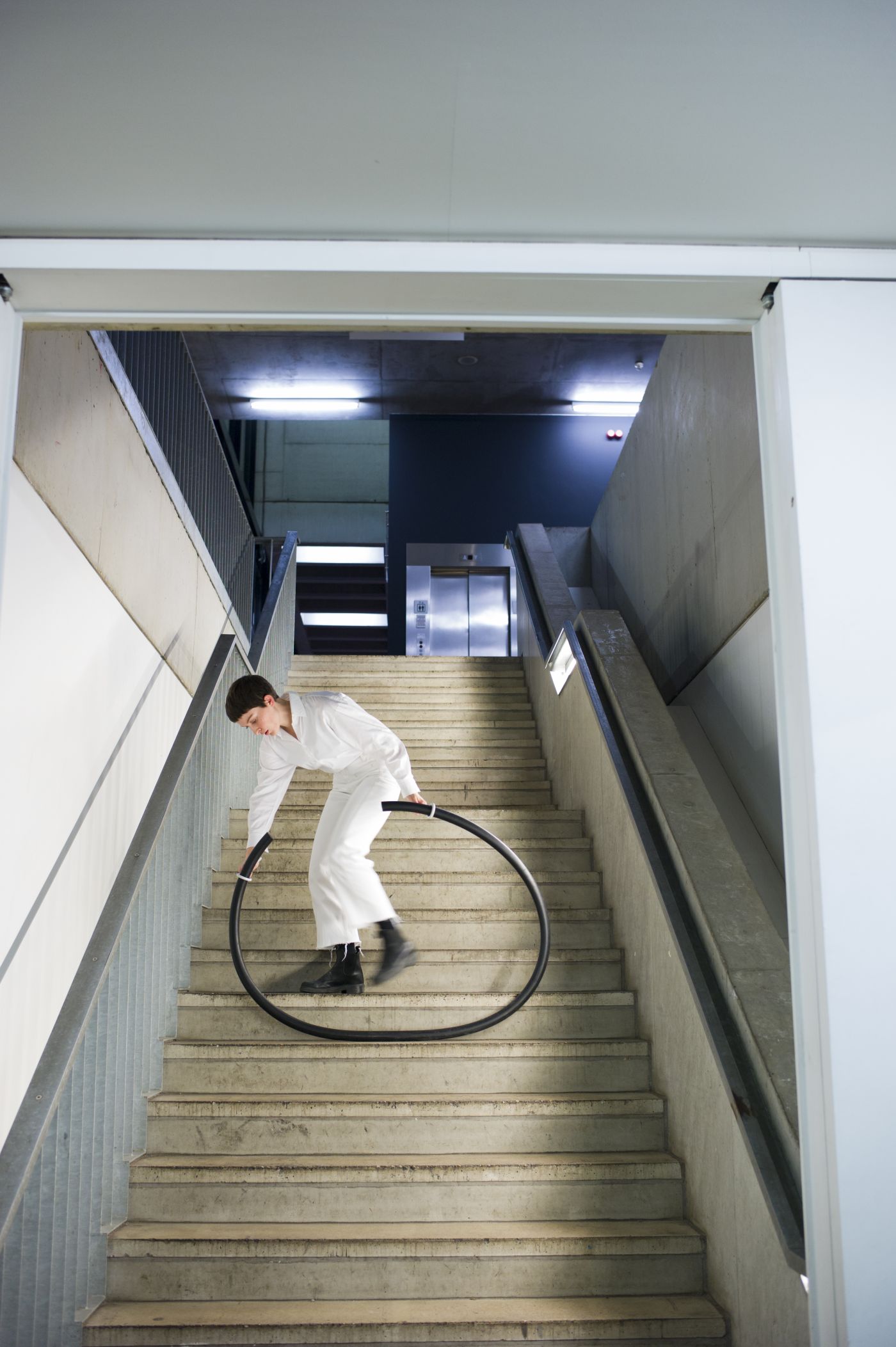
In the practice of Ode de Kort (1992, Malle, BE), as consistent collaborators, O and U are (much more than only letters), companions to think, exercise and perform with. By exercising and training with these characters they generate both (typo)graphic, performative and linguistic questions. In a continuous transposition between photography, installation, video, performance and text, De Kort’s practice is a way to test sense-making and unmaking, shifting the relationship between language and the formation of the self.
Her long-lasting artistic involvement with the shapes of “O” and later the “U” resulted in an extensive vocabularium, a language in a continuous flux; new bodies such as comma’s, black rubber boots (J and L, ‘je’- I, ‘elle’ - her, in French), legs, OO’s (eyes?) and paper have been introduced. Recent installation use various tropes and objects of the photographic world spatially. Transforming the equipment from the photographer’s studio such as paper rolls and tripods into a landscape, the installations present a form of dislocation and translation between image and space. The body of paper thus takes on multiple roles; becoming landscape, screen, scroll, (back)stage.
One can immediately perceive how her research and work methodology with these shapes are embedded in daily life. There is an urgency, almost an obsession related to it. The artist talks about exercising and training with the characters. This dedication, or if you want the interlacing of art and life, comes across quite vividly in the work, which constitutes a world in itself, with its rules, patterns, inhabitants and aesthetics.
> find out more
> CV
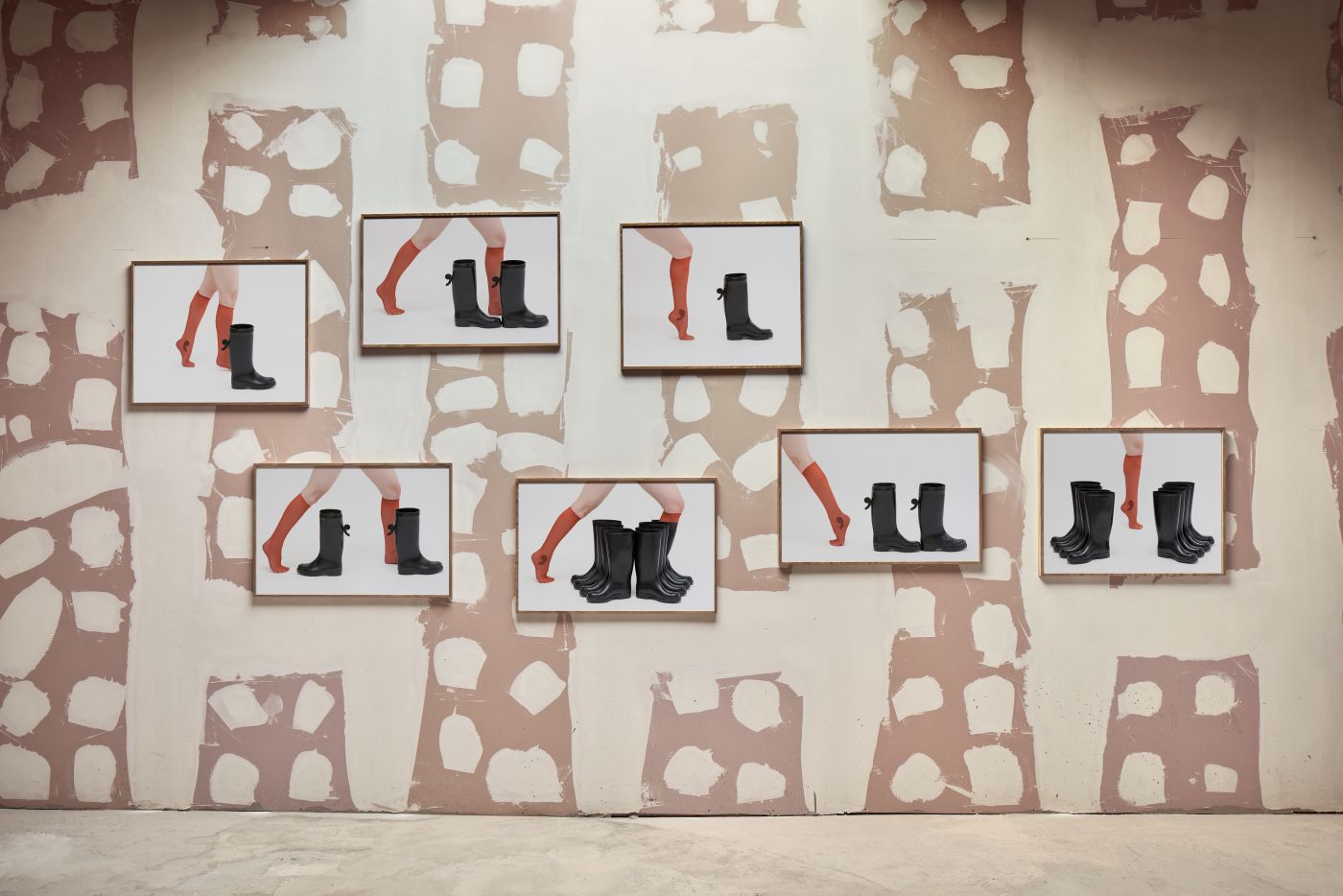
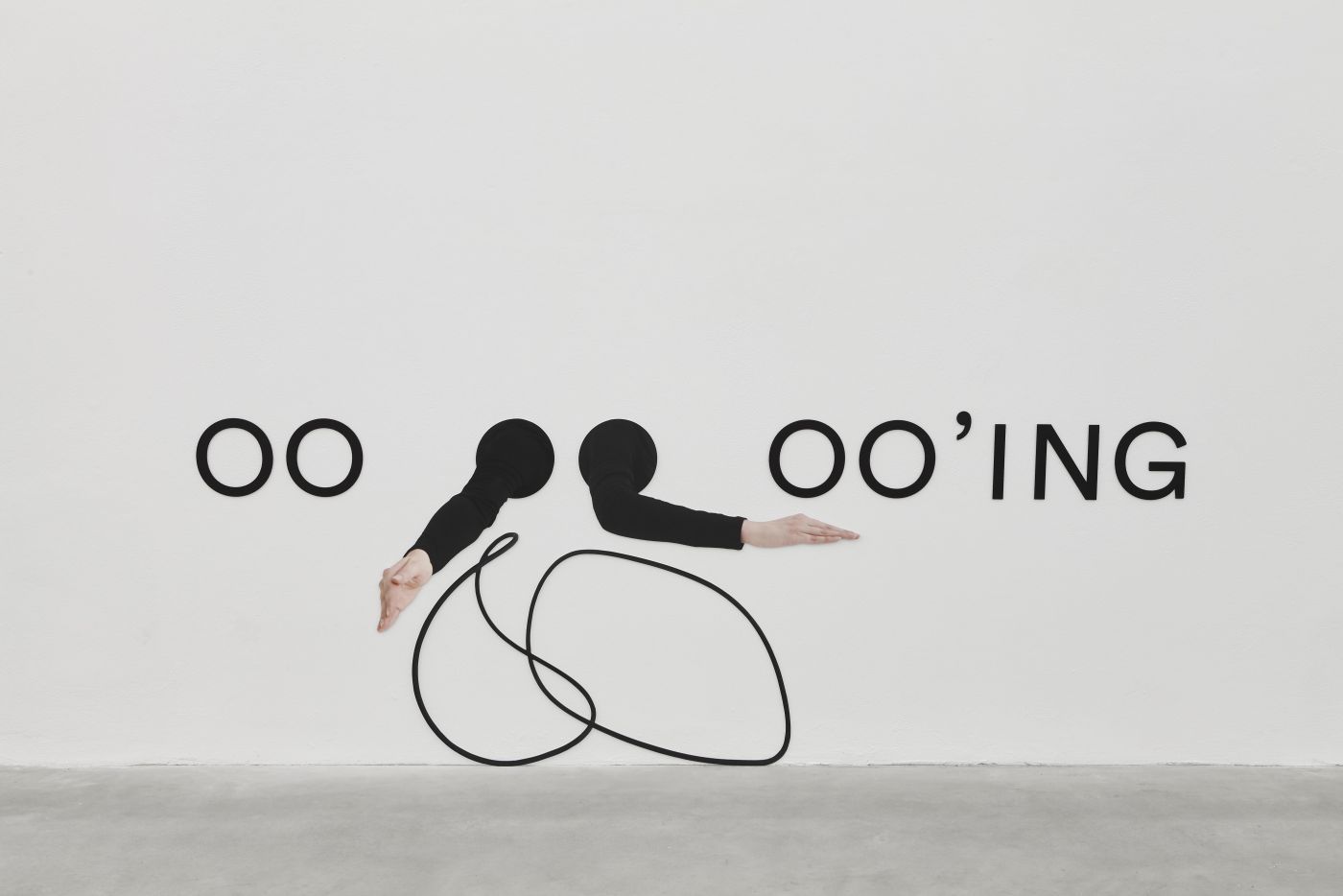
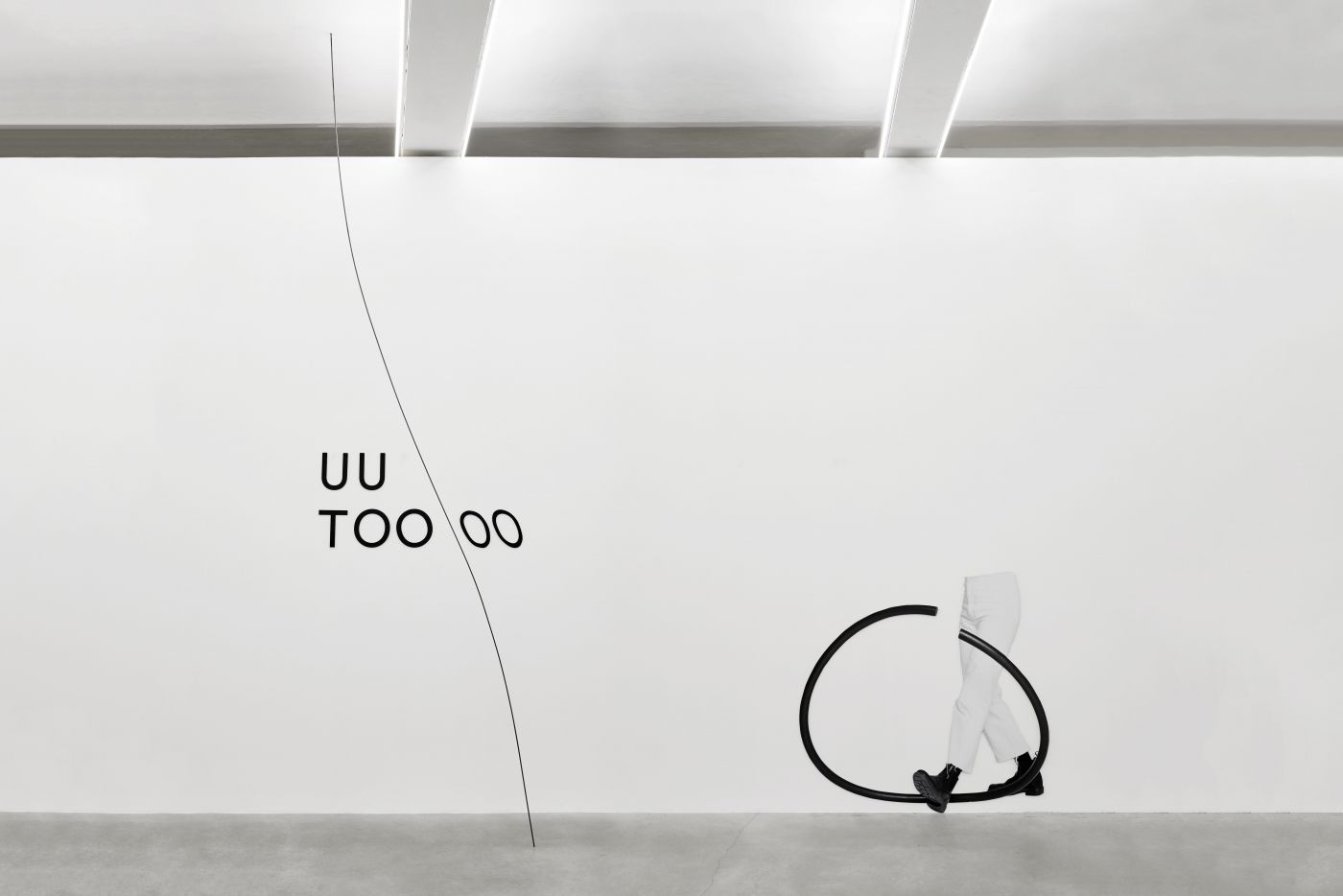
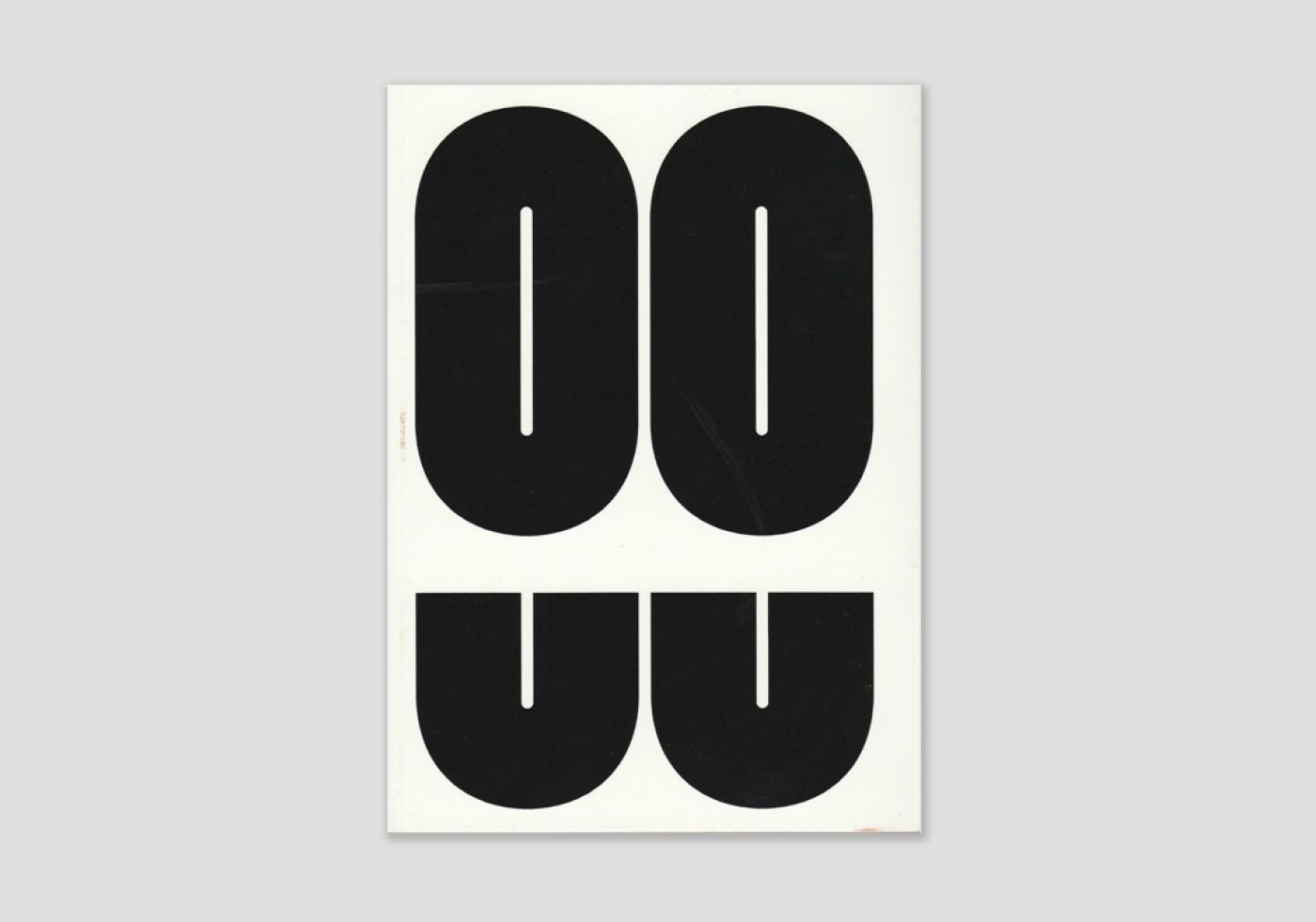
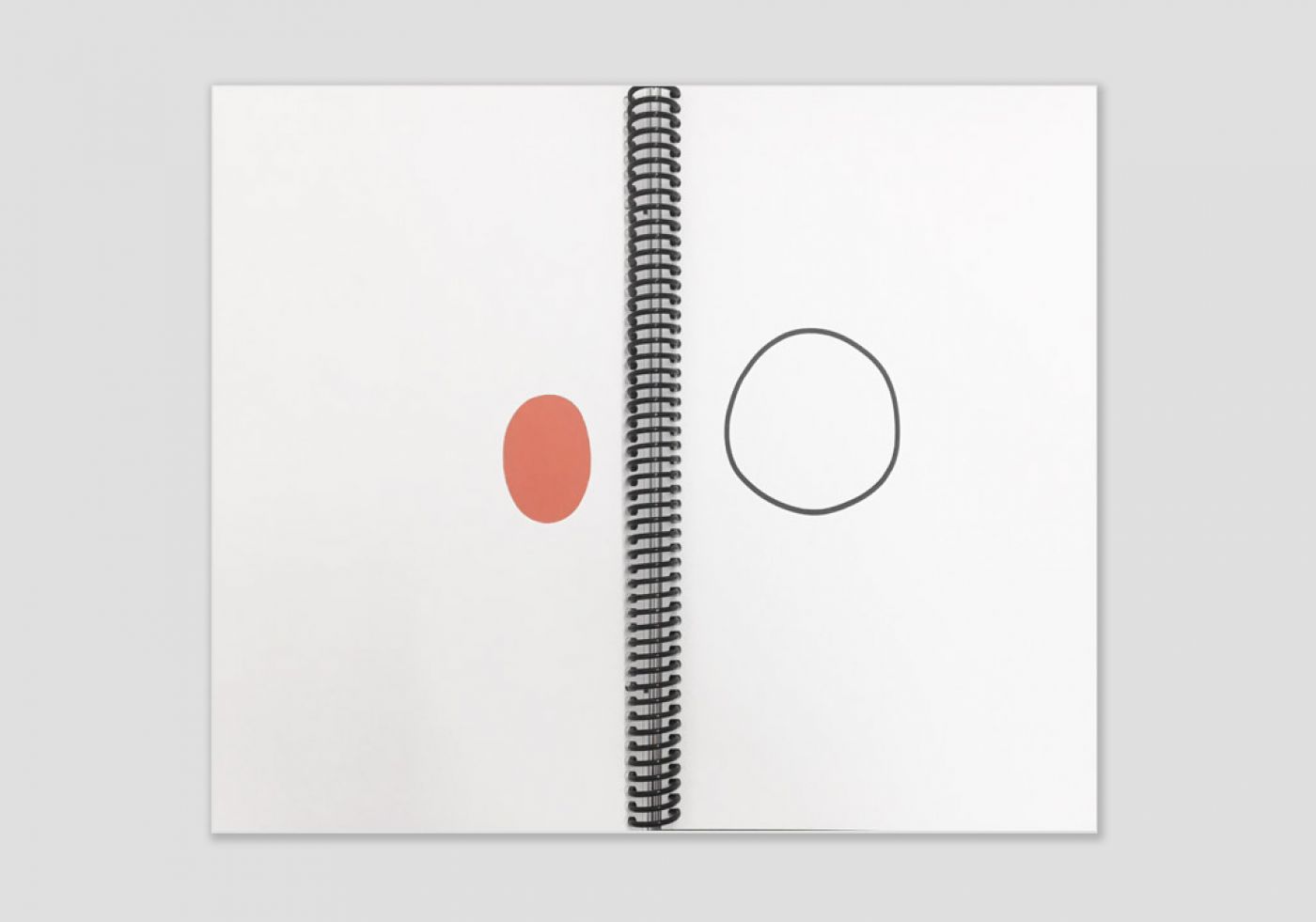
"For all its seriousness, de Kort’s work wields a no less understated sense of humor. Incidentally, it is perhaps not a coincidence that there are so many circles in her name– as if the depictions of circles were but veiled self-portraits, when in fact that circle functions as a cipher, liable to contain anything and nothing at once. The artist is fully aware of how charged and potentially misleading these forms are. Their capacity for comedy seems as inexhaustible as their innocence is incontestable, sort of like, well, clowns– which they are not obviously. Just circles (which are never just circles)."
(Chris Sharp)
